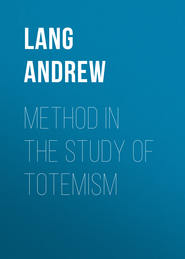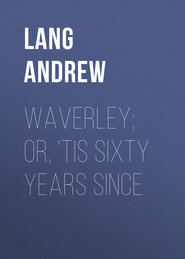По всем вопросам обращайтесь на: info@litportal.ru
(©) 2003-2025.
✖
Aucassin and Nicolete
Настройки чтения
Размер шрифта
Высота строк
Поля
All this is clearly analogous in form no less than in matter to our cante-fable. Mr. Motherwell speaks of fabliaux, intended partly for recitation, and partly for being sung; but does not refer by name to Aucassin and Nicolete. If we may judge by analogy, then, the form of the cante-fable is probably an early artistic adaptation of a popular narrative method.
STOUR; an ungainly word enough, familiar in Scotch with the sense of wind-driven dust, it may be dust of battle. The French is Estor.
BIAUCAIRE, opposite Tarascon, also celebrated for its local hero, the deathless Tartarin. There is a great deal of learning about Biaucaire; probably the author of the cante-fable never saw the place, but he need not have thought it was on the sea-shore, as (p. 39) he seems to do. There he makes the people of Beaucaire set out to wreck a ship. Ships do not go up the Rhone, and get wrecked there, after escaping the perils of the deep.
On p. 42, the poet clearly thinks that Nicolete, after landing from her barque, had to travel a considerable distance before reaching Biaucaire. The fact is that the poet is perfectly reckless of geography, like him who wrote of the set-shore of Bohemia.
PAINTED WONDROUSLY. No one knows what is really meant by à miramie.
PLENTIFUL LACK OF COMFORT: rather freely for Mout i aries peu conquis.
MALENGIN: a favourite word of Sir Thomas Malory: “mischievous intent.”
FEATS OF YOUTH: ENFANCES, the regular term for the romance of a knight’s early prowess.
TWO APPLES; nois gauges in the original. But walnuts sound inadequate.
Here the MS. has a lacuna.
There is much useless learning about the realm of Torelore. It is somewhere between Kôr and Laputa. The custom of the Couvade was dimly known to the poet. The feigned lying-in of the father may have been either a recognition of paternity (as in the sham birth whereby Hera adopted Heracles) or may have been caused by the belief that the health of the father at the time of the child’s birth affected that of the child. Either origin of the Couvade is consistent with early beliefs and customs.
EYEBRIGHT. This is a purely fanciful rendering of Esclaire.
notes
1
Gaston Paris, in M. Bida’s edition, p. xii. Paris, 1878. The blending is not unknown in various countries. See note at end of Translation.
2
I know not if I unconsciously transferred this criticism from M. Gaston Paris.
3
“Love in Idleness.” London, 1883, p. 169.
4
Theocritus, x. 37.
5
I have not thought it necessary to discuss the conjectures, – they are no more, – about the Greek or Arabic origin of the cante-fable, about the derivation of Aucassin’s name, the supposed copying of Floire et Blancheflor, the longitude and latitude of the land of Torelore, and so forth. In truth “we are in Love’s land to-day,” where the ships sail without wind or compass, like the barques of the Phaeacians. Brunner and Suchier add nothing positive to our knowledge, and M. Gaston Paris pretends to cast but little light on questions which it is too curious to consider at all. In revising the translation I have used with profit the versions of M. Bida, of Mr. Bourdillon, the glossary of Suchier, and Mr. Bourdillon’s glossary. As for the style I have attempted, if not Old English, at least English which is elderly, with a memory of Malory.
STOUR; an ungainly word enough, familiar in Scotch with the sense of wind-driven dust, it may be dust of battle. The French is Estor.
BIAUCAIRE, opposite Tarascon, also celebrated for its local hero, the deathless Tartarin. There is a great deal of learning about Biaucaire; probably the author of the cante-fable never saw the place, but he need not have thought it was on the sea-shore, as (p. 39) he seems to do. There he makes the people of Beaucaire set out to wreck a ship. Ships do not go up the Rhone, and get wrecked there, after escaping the perils of the deep.
On p. 42, the poet clearly thinks that Nicolete, after landing from her barque, had to travel a considerable distance before reaching Biaucaire. The fact is that the poet is perfectly reckless of geography, like him who wrote of the set-shore of Bohemia.
PAINTED WONDROUSLY. No one knows what is really meant by à miramie.
PLENTIFUL LACK OF COMFORT: rather freely for Mout i aries peu conquis.
MALENGIN: a favourite word of Sir Thomas Malory: “mischievous intent.”
FEATS OF YOUTH: ENFANCES, the regular term for the romance of a knight’s early prowess.
TWO APPLES; nois gauges in the original. But walnuts sound inadequate.
Here the MS. has a lacuna.
There is much useless learning about the realm of Torelore. It is somewhere between Kôr and Laputa. The custom of the Couvade was dimly known to the poet. The feigned lying-in of the father may have been either a recognition of paternity (as in the sham birth whereby Hera adopted Heracles) or may have been caused by the belief that the health of the father at the time of the child’s birth affected that of the child. Either origin of the Couvade is consistent with early beliefs and customs.
EYEBRIGHT. This is a purely fanciful rendering of Esclaire.
notes
1
Gaston Paris, in M. Bida’s edition, p. xii. Paris, 1878. The blending is not unknown in various countries. See note at end of Translation.
2
I know not if I unconsciously transferred this criticism from M. Gaston Paris.
3
“Love in Idleness.” London, 1883, p. 169.
4
Theocritus, x. 37.
5
I have not thought it necessary to discuss the conjectures, – they are no more, – about the Greek or Arabic origin of the cante-fable, about the derivation of Aucassin’s name, the supposed copying of Floire et Blancheflor, the longitude and latitude of the land of Torelore, and so forth. In truth “we are in Love’s land to-day,” where the ships sail without wind or compass, like the barques of the Phaeacians. Brunner and Suchier add nothing positive to our knowledge, and M. Gaston Paris pretends to cast but little light on questions which it is too curious to consider at all. In revising the translation I have used with profit the versions of M. Bida, of Mr. Bourdillon, the glossary of Suchier, and Mr. Bourdillon’s glossary. As for the style I have attempted, if not Old English, at least English which is elderly, with a memory of Malory.











